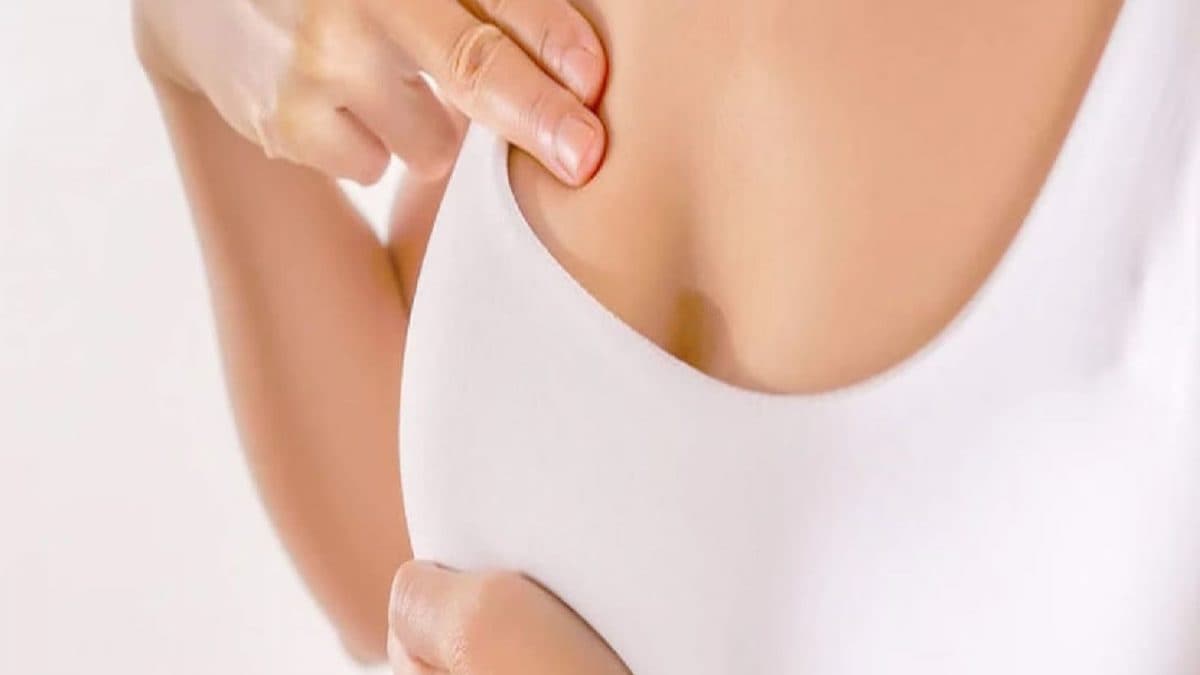Last Updated:
Learn why a monthly breast self-exam is a vital self-care ritual. Dr. Joydeep Ghosh explains how early detection can save lives.

A five-minute self-exam, ideally performed once a month after the menstrual period, can become a life-affirming check-in with your body rather than an anxious chore.
Every October, pink ribbons bloom across social media, reminding us to think about breast cancer. Yet awareness often fades as quickly as the month does. The truth is, self-care should not be seasonal and one of the simplest, most empowering self-care rituals any woman can adopt is the monthly breast self-examination (BSE).
Dr Joydeep Ghosh, Senior Consultant (Medical Oncology), Apollo Cancer Centre, Kolkata, shares all you need to know.
Recommended Stories
The Science Behind Self-Awareness
Breast cancer is now the most common cancer among Indian women, surpassing cervical cancer. According to the Indian Council of Medical Research (ICMR), nearly 1 in 28 Indian women will develop breast cancer in her lifetime and the majority are diagnosed in later stages. The tragedy is that early detection could change most of those outcomes dramatically.
A woman who knows the natural look and feel of her breasts is far more likely to notice subtle changes a lump, skin dimpling, nipple retraction, or discharge that may signal an early tumour. Such awareness, paired with timely clinical evaluation and mammography after age 40, forms the cornerstone of early detection.
Why “Ritualizing” the Exam Matters
Do we ever forget to brush our teeth? We don’t because it’s a ritual ingrained in our minds. We can build equally long-lasting habits with a bit of initial effort, after which they become automatic.
A five-minute self-exam, ideally performed once a month after the menstrual period, can become a life-affirming check-in with your body rather than an anxious chore. Make it as regular as moisturizing, washing clothes, or cleaning cupboards in the privacy of your room, in front of a mirror, with calm focus.
How to Perform It Correctly
In front of a mirror: Observe both breasts with arms relaxed, then raised. Look for changes in contour, skin texture, or nipple position.
While lying down: Use the pads of your fingers to feel the entire breast in circular motions, from the collarbone to the armpit.
In the shower: The skin’s wetness helps your fingers glide easily to detect small irregularities.
If you sense a new lump or notice anything unusual, don’t panic, most lumps are benign. But do not delay consulting a clinician; the earlier the assessment, the simpler the management.
From Stigma to Empowerment
In India, cultural hesitation and modesty often prevent women from discussing breast health openly. Many still depend on family members to decide when to seek care. It’s time to shift that narrative. Breast self-exams aren’t about fear they’re about agency.
A woman who practices BSE regularly is taking charge of her health, setting an example for her daughters, friends, and community. Empowerment, in this context, literally saves lives.
The Larger Message
No amount of medical infrastructure can compensate for the lost window of early diagnosis. By making the breast self-exam part of every woman’s self-care routine, we turn awareness into action. Think of it as your monthly conversation with yourself, quiet, honest, and possibly lifesaving.
In the language of self-love, awareness is the first word.
About the Author

Swati Chaturvedi, a seasoned media and journalism aficionado with over 10 years of expertise, is not just a storyteller; she’s a weaver of wit and wisdom in the digital landscape. As a key figure in News18 Engl…Read More
Swati Chaturvedi, a seasoned media and journalism aficionado with over 10 years of expertise, is not just a storyteller; she’s a weaver of wit and wisdom in the digital landscape. As a key figure in News18 Engl… Read More
October 07, 2025, 09:10 IST
Loading comments…
Go to Source
Author: News18



)